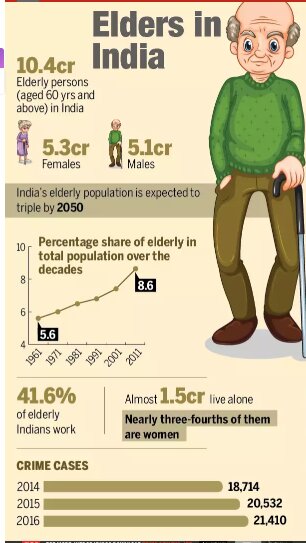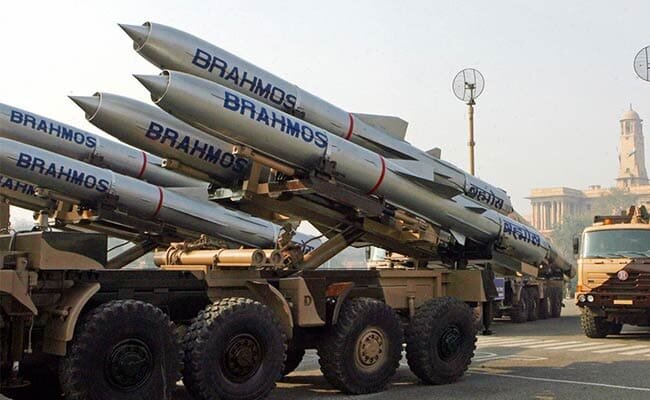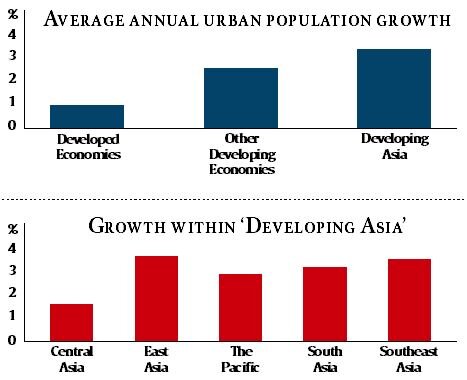School Education Quality Index: NITI Aayog
National Institution for Transforming India (NITI) Aayog has released the first edition of the School Education Quality Index (SEQI).
- SEQI has been developed by NITI Aayog to evaluate the performance of States and Union Territories (UTs) in the school education sector.
- Developed through a collaborative process including key stakeholders such as the Ministry of Human Resource Development (MHRD), the World Bank and sector experts, the index consists of 30 critical indicators that assess the delivery of quality education.
School Education Quality Index
- Composition:
- SEQI is based on a set of indicators that measure the overall effectiveness, quality and efficiency of the Indian school education system.
- Aim:
- To drive policy reforms that will improve the quality of school education.
- To institutionalise a focus on enhancing education outcomes by driving improvements in learning levels, access, equity, infrastructure and governance processes.
- Ranking Process:
- To facilitate like-to-like comparisons, States and UTs have been grouped as Large States, Small States and Union Territories.
- Within each of these groups, the indicator values have been appropriately scaled, normalized and weighted to generate an overall performance score and ranking for each State and UT.
- States and UTs were ranked on their overall performance in the reference year 2016-17, as well as on the change in their performance between the reference year and base year (2015-16).
- To facilitate like-to-like comparisons, States and UTs have been grouped as Large States, Small States and Union Territories.
- Performance of the States:
- Among 20 large States, Kerala was ranked first for overall performance on the quality of school education while Uttar Pradesh came in last.
- However, Haryana, Assam and Uttar Pradesh showed the most improvement in their performance in 2016-17, in comparison to the base year of 2015-16.
- Among smaller States, Manipur emerged as the best performer, while Chandigarh topped the list of Union Territories.
- It is to be noted that all seven UTs have shown an improvement in their performance.
- West Bengal refused to participate in the evaluation process and has not been included in the rankings.
- Among 20 large States, Kerala was ranked first for overall performance on the quality of school education while Uttar Pradesh came in last.
- How the Index will help States?
- The index recognises that school education is a subject on the Concurrent List and that State-level leadership is crucial for improving outcomes in a cost-effective manner.
- The index will serve as a regular and transparent review of the status of school education quality across the States and UTs.
- The index encourages States/UTs to improve their scores by showing progress across these aspects.
- In line with NITI Aayog’s mandate to foster the spirit of competitive and cooperative federalism, the index strives to facilitate the sharing of knowledge and best practices across States and UTs.
NITI Aayog
- The National Institution for Transforming India, also called NITI Aayog, was formed via a resolution of the Union Cabinet on 1st January 2015.
- The Government of India constituted the NITI Aayog to replace the Planning Commission instituted in 1950.
- It is the premier policy ‘Think Tank’ of the Government of India, providing both directional and policy inputs.
- While designing strategic and long term policies and programmes for the Government of India, NITI Aayog also provides relevant technical advice to the Centre and States.
- The Governing Council of NITI, with the Prime Minister as its Chairman, comprises Chief Ministers of all States and Lt. Governors of Union Territories (UTs).
Penicillin Revival to Fight Rheumatic Fever
In a bid to fight drug resistance and tackle the prevalence of rheumatic heart disease, the Government of India is planning a revival of the drug named Penicillin.
Background
- Penicillin was the first antibiotic that was discovered in 1928 by Alexander Fleming.
- It is still the first-line antibiotic drug in many western countries. This antibiotic was extensively used to treat American soldiers wounded in World War II.
- In India, it gradually went out of the markets because of unrealistic price control measures of the government.
- The prices of the drug were kept so low that the manufacturers stopped making the drug and Penicillin went out of production. Although some of its more expensive derivatives continued to be prescribed.
Underlying Need
- India has a high burden of rheumatic fever and rheumatic heart disease (which generally goes undiagnosed and leads to many maternal deaths at the time of childbirth).
- Rheumatic fever is endemic in India and remains one of the major causes of cardiovascular disease, accounting for nearly 25-45% of acquired heart disease.
- Population-based studies indicate the prevalence of rheumatic heart disease in India to be at a rate of about 2/1000 population.
- The surveys however conducted by Indian Council of Medical Research (ICMR) at the school-level indicate that the children in the age group of 5-16 years mark the overall prevalence at the rate of 6/1000.
- According to the Health ministry, rheumatic fever and rheumatic heart disease can be treated by the intake of penicillin.
- Penicillin is the cheapest option for rheumatic fever treatment.
Maternal death
- According to the World Health Organization, maternal death is the death of a woman while pregnant or within 42 days of termination of pregnancy, irrespective of the duration and site of the pregnancy, from any cause related to or aggravated by the pregnancy or its management but not from accidental or incidental causes.
Maternal Mortality Ratio
- The maternal mortality ratio (MMR) is defined as the number of maternal deaths during a given time period per 100,000 live births during the same time period. In India, the MMR was 130/100,000 in 2016.
Rheumatic Fever
- It is an inflammatory disease that can develop as a complication of inadequately treated strep throat or scarlet fever.
- Rheumatic fever can cause permanent damage to the heart, including damaged heart valves and heart failure.
- Not all sore throats go on to become rheumatic fever with severe joint pain or affect the heart in a disease that eventually leaves no option but to replace the heart valves- a condition known as rheumatic heart disease.
- Prevalence: Rheumatic fever is most common in 5-15 years old children, though it can also develop in younger children and adults.
- Cause: Rheumatic fever can occur after an infection of the throat with a bacterium called Group A streptococcus.
- Group A streptococcus infections of the throat cause strep throat or, less commonly, scarlet fever. Group A streptococcus infections of the skin or other parts of the body rarely trigger rheumatic fever.
- Hence, the government is planning to procure penicillin centrally for three years and administer it to all children between 5-15 years who have a sore throat, at least once.
- The drug will be dispensed through primary health centres or administered by Accredited Social Health Activists (ASHA) workers.
- The government is also in consultation with the National Pharmaceutical Pricing Authority (NPPA) to take it off from the price control list.
- To kickstart the production again, the government will procure the medicine centrally for three years so that manufacturers get encouraged to restart the production process.
International Day of Older Persons
The International Day of Older Persons is observed on 1st October (designated in 1990 by the United Nations General Assembly) every year.
- 2019 Theme: ‘The Journey to Age Equality’
- The 2019 theme is aligned with Sustainable Development Goal 10 (SDG 10) and focuses on pathways of coping with existing — and preventing future — old age inequalities.
- SDG 10 has the target to reduce inequality within and among countries and ensure equal opportunities for all.
Initiatives Taken by India
- The Ministry of Social Justice and Empowerment is the Nodal Ministry for matters relating to the Senior Citizens.
- Integrated Programme for Senior Citizens - It is the central sector scheme and its main objective is to improve the quality of life of the Senior Citizens by providing basic amenities like shelter, food, medical care and entertainment opportunities and by encouraging productive and active ageing through providing support for capacity building of State/ UT Governments/Non-Governmental Organizations (NGOs)/Panchayati Raj Institutions (PRIs) / local bodies and the community at large.
- Pradhan Mantri Vaya Vandana Yojana: It was launched in May 2017 and is aimed towards providing social security during old age and to protect elderly people aged 60 and above against a future fall in their income due to uncertain market conditions. The scheme provides an assured return of 8% per annum for 10 years.
- Maintenance and Welfare of Parents and Senior Citizens (MWPSC) Act, 2007: It was enacted in December 2007 to ensure need-based maintenance for Parents and Senior Citizens and their welfare.
Ancient River Unearthed in Uttar Pradesh
The Union Jal Shakti Ministry has excavated an old, dried-up river in the Prayagraj during geophysical survey covering the Prayagraj and Kaushambi region in Uttar Pradesh.
- An excavated river linked the Ganga and Yamuna rivers.
- The “Ancient Buried River” is around 4 km wide, 45 km long and consisted of a 15-meter-thick layer buried under the soil.
- The newly discovered river was a buried paleochannel that joins the Yamuna river at Durgapur village, about 26 km south of the current Ganga-Yamuna confluence at Prayagraj.
- The genesis of these buried rivers followed a Report on PaleoChannel on North-West India.
- The knowledge on subsurface connectivity between Ganga and Yamuna rivers will play a very crucial role in the planning of Ganga cleaning and protecting safe groundwater resources,
Palaeochannels
- A channel that is no longer part of an active river system and has ceased to be a conduit of water is commonly referred to as a palaeochannel.
- It occurs when rivers change their course either due to the movement of tectonic plates or severe floods and cut new ones.
- Some of the palaeochannels lie buried under younger sediments.
- Palaeochannels are commonly occurring landforms in alluvial landscapes, and have an economic significance because of their use in the exploration for freshwater resources, artificial recharge and storage of groundwater.
- Additionally, they are of importance in the location and assessment of mineral deposits such as uraniferous ores, gold, silver and other placer deposits hosted in them.
Report on PaleoChannel on North-West India
- The report has been prepared by the K.S. Valdiya Committee under the Ministry of Jal Shakti.
- The report is based on the study of the land texture, piles of sediments, shapes, and features of states of North-West India including- Rajasthan, Haryana, and Punjab.
- The found sediments are reminiscent of ones found in present-day Ghaggar, Ganga, and the Yamuna.
- The report is an assertion of the assumption that River Saraswati originated from Adibadri in Himalaya to culminate in the Arabian Sea through the Runn of Kutch.
- The report also states that the river once upon a time was the lifeline of the North-Western states of India.
Global Urbanization Shift
According to the economic outlook of Asian Development Outlook Report-2019, the number of urban inhabitants in developing Asia has increased almost five times since 1970.
- Asian Development Outlook Report is released by the Asian Development Bank (ADB).
- It used the data from the World Urbanization Prospects report that is released by the Department of Economic and Social Affairs of the United Nations.
Key Findings
- Between 1970 to 2017, the urban population in Developing Asia group of countries grew from 375 million to 1.84 billion. The global increase in urban population led by this region accounted for approx. 53%.
- Two-thirds of the nearly 1.5.billion additional city dwellers in Developing Asia belong to India and China.
- Developing Asia refers to a group of 45 countries that are members of the ADB.
- According to the report, the Developing Asia group urbanized faster than the rest of the world not only in terms of absolute growth but also in terms of the growth rate.
- The urban population in this region increased at an average 3.4% per annum from 1970 to 2017.
- This was much faster than the 2.6% in the rest of the developing world (mainly Africa and Latin America) and 1.0% in the developed world.
- The recent trend in Urbanisation, according to World Urbanization Prospects Report-2018:
- Urban growth is closely related to the three dimensions of sustainable development: social, economic, and environmental.
- To ensure that the benefits of urbanization are shared and that no one is left behind, policies to manage urban growth need to ensure access to infrastructure and social services for all, focusing on the needs of the urban poor and other vulnerable groups for housing, education, health care, decent work and a safe environment.
- Globally, more people live in urban areas than in rural areas, with 55% of the world’s population residing in urban areas in 2018.
- India, China, and Nigeria are expected to account for 35% of the growth in the world’s urban population between 2018 and 2050. India is projected to add 416 million urban dwellers, China 255 million and Nigeria 189 million.
- Tokyo is the world’s largest city with an agglomeration of 37 million inhabitants, followed by Delhi with 29 million, Shanghai with 26 million, and Mexico City and São Paulo, each with around 22 million inhabitants. Cairo, Mumbai, Beijing and Dhaka all have close to 20 million inhabitants.
Asian Development Bank (ADB)
- The Asian Development Bank (ADB) is a regional development bank that aims to promote social and economic development in Asia.
- It was established in December 1966 and is headquartered in Manila, Philippines.
- Japan holds the largest proportion of shares in ADB followed by the USA.
BRAHMOS Missile
BRAHMOS supersonic cruise missile featuring Indian propulsion system, airframe, power supply, and other major indigenous components has been successfully test-fired.
- BRAHMOS is a joint venture between the Defence Research and Development Organisation of India (DRDO) and the NPOM of Russia.

- Brahmos is named on the rivers Brahmaputra and Moskva.
- It is a two-stage (solid propellant engine in the first stage and liquid ramjet in second) air to surface missile with a flight range of around 300 km.
- However, India's entry into the Missile Technology Control Regime (MTCR) has extended the range of the BRAHMOS missile to reach 450 km-600km, a shade above its current MTCR capped range of 300 km.
- Brahmos is the heaviest weapon to be deployed on Su-30 MKI fighter aircraft, with a weight of 2.5 tonnes.
- Brahmos is a multiplatform i.e it can be launched from land, air, and sea and multi capability missile with pinpoint accuracy that works in both day and night irrespective of the weather conditions.
- It operates on the "Fire and Forgets" principle i.e it does not require further guidance after launch.
- Brahmos is one of the fastest cruise missile currently operationally deployed with speed of Mach 2.8, which is 3 times more than the speed of sound.


